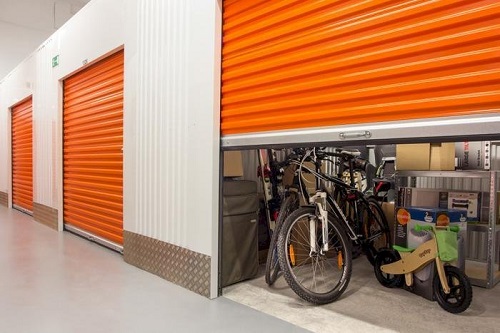Self-Storage Market: A Growing Solution for Space Management
The self-storage market is experiencing significant growth as individuals and businesses seek convenient and secure solutions for space management. Self-storage facilities provide individuals and businesses with the ability to rent storage units to store their belongings, offering a flexible and accessible solution for various storage needs. This market has gained popularity due to factors such as urbanization, downsizing, and the increasing need for additional storage space.
The Self-storage Market size is projected to grow from USD 62.1 Billion in 2023 to USD 91.83 Billion by 2032, exhibiting a compound annual growth rate (CAGR) of 5.00% during the forecast period (2023 - 2032).
Get a sample PDF of the report at –
https://www.marketresearchfuture.com/sample_request/11668
Competitive Analysis:
The self-storage market is highly competitive, with numerous players vying for market share. These companies compete based on factors such as location, pricing, security measures, and additional services offered. To gain a competitive edge, self-storage providers are investing in expanding their facility networks, enhancing security systems, and providing value-added services such as climate-controlled units, 24/7 access, and online booking platforms. Additionally, strategic partnerships and acquisitions have become common in the industry, enabling providers to expand their market presence and cater to a wider customer base.
Key companies in the Self-storage Market include,
- U-Haul International Inc.
- Life Storage Inc.
- CubeSmart LP
- National Storage Affiliates
- Safestore Holdings PLC
- Simply Self Storage Management LLC
Market Drivers:
Several factors are driving the growth of the self-storage market. Firstly, urbanization and population growth have led to an increase in housing density, resulting in limited living space for individuals and businesses. This has created a growing need for additional storage space to accommodate belongings that may not fit within limited living quarters. Self-storage facilities provide a convenient solution for individuals to store their excess belongings while still having easy access to them when needed.
Secondly, the trend of downsizing and decluttering has gained traction in recent years. Many individuals and families are opting for smaller living spaces, which often lack sufficient storage capacity. Self-storage facilities offer a secure and accessible solution for storing items that are not regularly used but still hold value. This trend is also observed in the business sector, as companies seek cost-effective storage options for excess inventory, documents, and equipment.
Market Restraints:
Despite the growth prospects, the self-storage market faces certain challenges. One of the significant restraints is the saturation of the market in some regions. In highly populated areas with numerous self-storage facilities, providers may struggle to differentiate themselves and attract customers. This necessitates a strategic approach to marketing and service differentiation to stand out in a crowded market.
Another challenge is the potential impact of economic downturns on the demand for self-storage units. During periods of economic instability, individuals and businesses may downsize or face financial constraints, resulting in a decreased need for storage space. Self-storage providers must be prepared to adapt to market fluctuations and adjust their strategies accordingly.
Segment Analysis:
The self-storage market can be segmented based on various criteria, including facility type, unit size, and target customers. Facility types can range from traditional brick-and-mortar buildings to converted warehouses or containers. Unit sizes vary to accommodate different storage needs, ranging from small lockers for personal items to large units for business inventory or vehicles. Target customers include individuals, households, students, and businesses, each with unique storage requirements.
Browse a Full Report –
https://www.marketresearchfuture.com/reports/self-storage-market-11668
Regional Analysis:
The self-storage market exhibits regional variations based on factors such as population density, urbanization trends, and economic conditions. North America currently dominates the market, driven by a high demand for self-storage units and a well-established industry. Europe is also witnessing substantial growth, particularly in densely populated urban areas. The Asia-Pacific region is expected to experience rapid growth, fueled by urbanization and the increasing need for storage solutions in emerging economies.
The self-storage market is thriving as individuals and businesses seek flexible and secure solutions for space management. The factors driving this growth include urbanization, downsizing, and the need for additional storage space. While the market is competitive, providers can differentiate themselves through strategic location selection, enhanced security measures, and value-added services. However, saturation in some regions and economic fluctuations pose challenges that providers must navigate. As the market continues to evolve, self-storage companies must adapt to changing customer needs and market dynamics to maintain a strong position in this flourishing industry.
Top Trending Reports:
Contact Center Analytics Market
Contact
Market Research Future (Part of Wantstats Research and Media Private Limited)
99 Hudson Street, 5Th Floor
New York, NY 10013
United States of America
+1 628 258 0071 (US)
+44 2035 002 764 (UK)
Email: sales@marketresearchfuture.com
Website: https://www.marketresearchfuture.com



